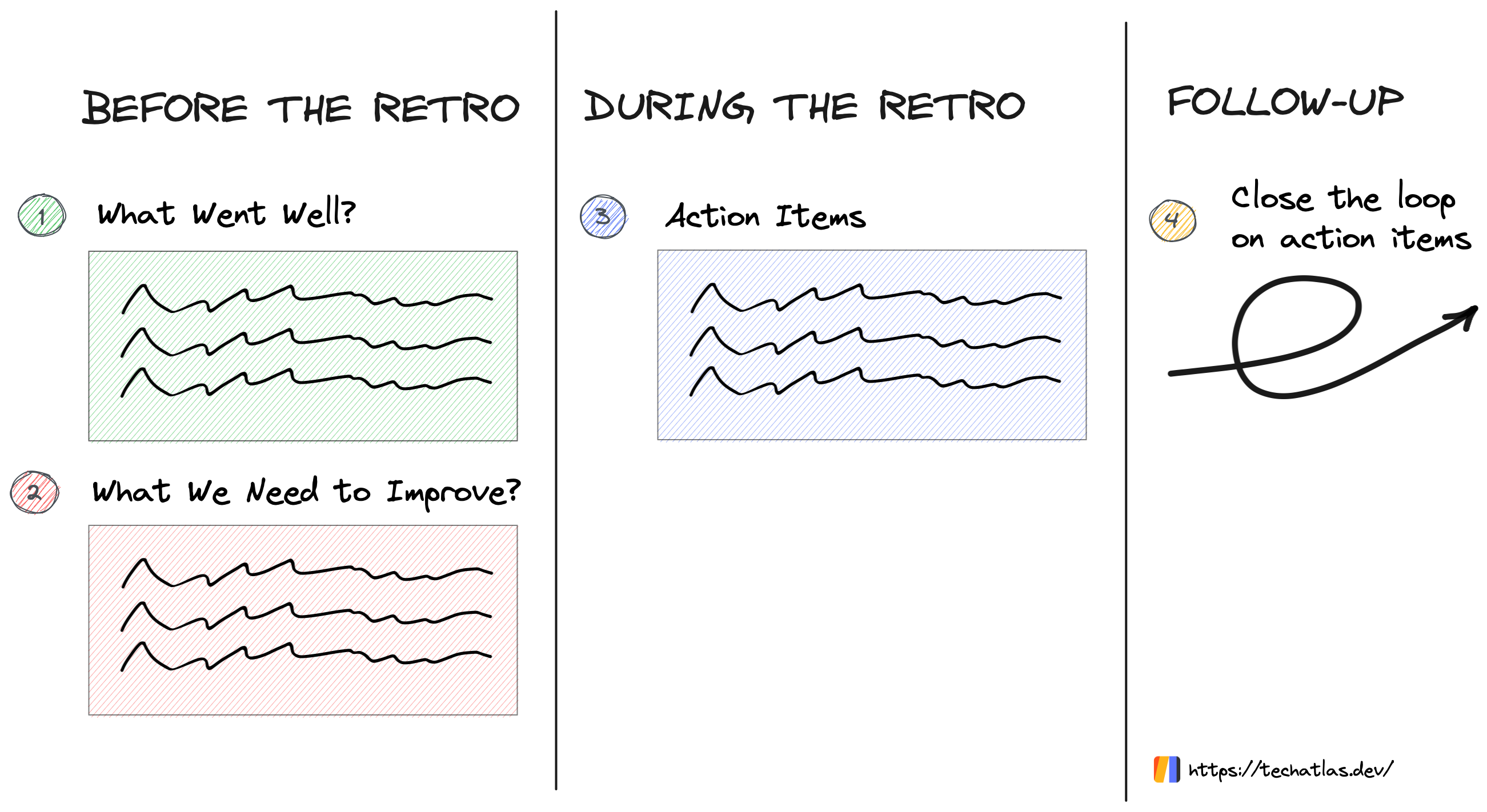Sprint Retrospective
Overview
At the end of the sprint, there is a sprint review and a sprint retrospective. These are two different exercises that need to be kept separate from each other. A team conducts ![]() Sprint Review to assess the team's progress against the sprint goals. Sprint review is an essential checkpoint to communicate progress between the team and stakeholders.
Sprint Review to assess the team's progress against the sprint goals. Sprint review is an essential checkpoint to communicate progress between the team and stakeholders.
Then, at the end of the sprint and before starting the next sprint team holds a sprint retrospective, during which the team reflects on the work that has just been completed and discusses following points:
- What went well in the sprint?
- What should we improve?
- What are we committing to improve in the next sprint?
- Any other comments team might have. Roundtable.
Why to run a retro?
Retrospective is a safe space for a team to discuss opportunities for improvement. It is important to highlight what works well as well. Leaders must emphasize the importance of good team work, helping each other and prioritizing team work.
Simple framework for retrospective
There are few frameworks for running retrospective. In this article we'll focus on one of them to begin with.
Simplest framework for retro is "What went well / What needs to be improved?".

Before the Retro
Set up a document with 2 sections for collecting feedback asking 2 questions:
- What went well?
- What we need to improve?
The document can be anything that allows team members to freely add answers to those 2 questions (Google doc, Notion page, Miro board, etc).
Send a document to the team before the Retrospective meeting and ask them to fill it out.
During the Retro
Set up a 3rd section that will empty for now called "Action Items".
On a call go over each of the items that team added and discuss it.
Facilitator reads the item out loud for everyone on a call and asks "Who wrote that?". Then the person who wrote an item explains it and gives some color to the issue. The team discusses the item and comes up with action items.
Capture action items in a separate 3rd section on the board.
Align everyone on action items: ask a question "Do you agree with this action item?" to the team.
After the Retro
You as an engineering leader on the team is responsible for post-processing action items:
- Create appropriate tickets.
- Schedule work to execute on action items.
Make sure to review action items on the next retro.